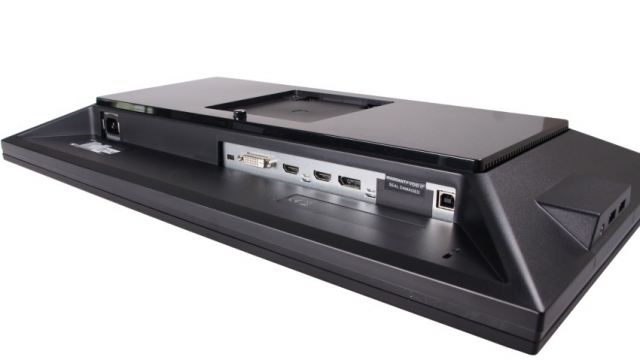
XL2420G Review
We've recently been toying around with one of the latest BenQ gaming monitors, the XL2420G, a 24-inch monitor designed with elite gamers in mind. This model is the step-up version in the XL series, featuring G-sync for those elitists that crave exceptional graphical fidelity, and advertised as perfect for competitive First Person Shooter gaming. With variable refresh rates, Nvidia solves the recurring dilemma – V-sync on or off? But is G-sync worth it the ramped up price? And more importantly, what the flip is G-sync? Here's a quick and basic intro to the science of G-sync, and why many think sliced bread should look up to it.
Tearing is a very common graphical error, which consists of multiple frames being seen on the screen at the same time. The monitor refreshes the screen with a frame, but as the GPU has a different refresh speed, the screen starts showing the next frame in the middle of updating the previous. This ‘tear’ in the screen is quite an uncomfortable issue that is likely to happen in every rig, no matter how many months you saved to buy it. Here's an image so your brain can assimilate all these fancy tech words.

That over there, that's tearing. In order to solve this issue, we have — until now — a specific configuration, which you've probably seen in many games, called V-sync. What this does is it allows the monitor to load the whole frame before refreshing the screen. This means that you won't have half frames anymore, as long as your GPU can keep up with the established refresh rate — usually 60Hz. However, if this is not the case, the frame you're seeing at the moment is likely to freeze momentarily as it waits for the next full frame to load, causing what´s called stuttering, an equally uncomfortable nuisance when playing games. On top of this, some users report input lag when V-sync is turned on — real snobs these.
G-sync arrives with pretensions of eliminating any discrepancy between V-sync nay-ers and yay-ers. It synchronises the frames sent by the GPU to the monitor's refresh rate, avoiding any of the problems mentioned above and providing with buttery smooth gameplay. So yes, G-sync is somewhat revolutionary, and it all points out to be the future in gaming monitors. Turning G-sync on and off does have quite a noticeable difference in performance and smoothness, and most of my tests on this monitor were regarding the G-sync. And this top notch performance, in this monitor, it just feels right.
 The XL2420G has a 1920x1080 resolution, which for those who have taken the leap to 4k may seem low enough, but since this monitor has a refresh rate of 144Hz, it is likely that you'll opt for higher refresh rate than resolution. BenQ's gaming monitors can boast of a 1000:1 contrast ratio and a 1ms response time, which minimises problems such as ghosting, particularly with such high refresh rate. This is achieved through the inclusion of a TN panel, which minimises the response time, but in this case, without barely any of the colour distortion you can find in some other TN panels. You can connect it to your computer with a DVI-DL port as well as any of the two HDMI or the DP1.2 port for multiple displays if that’s what you’re into — no judging.
The XL2420G has a 1920x1080 resolution, which for those who have taken the leap to 4k may seem low enough, but since this monitor has a refresh rate of 144Hz, it is likely that you'll opt for higher refresh rate than resolution. BenQ's gaming monitors can boast of a 1000:1 contrast ratio and a 1ms response time, which minimises problems such as ghosting, particularly with such high refresh rate. This is achieved through the inclusion of a TN panel, which minimises the response time, but in this case, without barely any of the colour distortion you can find in some other TN panels. You can connect it to your computer with a DVI-DL port as well as any of the two HDMI or the DP1.2 port for multiple displays if that’s what you’re into — no judging.
On top of this, the XL2420G comes with three programmable gaming modes, so you can set up the display accordingly to the game you're playing. BenQ has also included all BenQ´s tweaking additions that help boost the monitor's performance, such as Low Blue Light, Motion Blur Reduction and Flicker-Free Technology. Lastly, the slick physical design of the monitor is also a plus, although it doesn't affect performance. However, the real deal in this monitor is the G-sync, and it’s what it makes it stand out from the rest of the XL series.
 Now, is G-sync worth the cost difference? That question is very subjective, of course, but maybe this reasoning will help you find your own answer. G-sync adds a hundred pounds, at least, to the price of a monitor, which is quite a substantial amount. But even if you have the money, is this what you should spend it on? G-sync caters to a niche of users: those who are high-end PC gamers with exquisite demands. If you play exclusively on PC and are proud of the big snob you are, then yes. G-sync is love, G-sync is life. If you´re not, maybe you will barely notice G-sync, and should indulge yourself with some more rewarding purchases to spend that money on. Like a new shower head, or something.
Now, is G-sync worth the cost difference? That question is very subjective, of course, but maybe this reasoning will help you find your own answer. G-sync adds a hundred pounds, at least, to the price of a monitor, which is quite a substantial amount. But even if you have the money, is this what you should spend it on? G-sync caters to a niche of users: those who are high-end PC gamers with exquisite demands. If you play exclusively on PC and are proud of the big snob you are, then yes. G-sync is love, G-sync is life. If you´re not, maybe you will barely notice G-sync, and should indulge yourself with some more rewarding purchases to spend that money on. Like a new shower head, or something.









COMMENTS